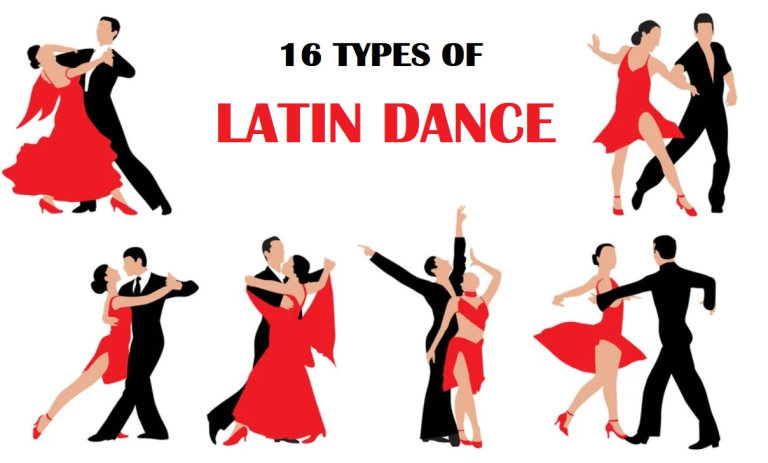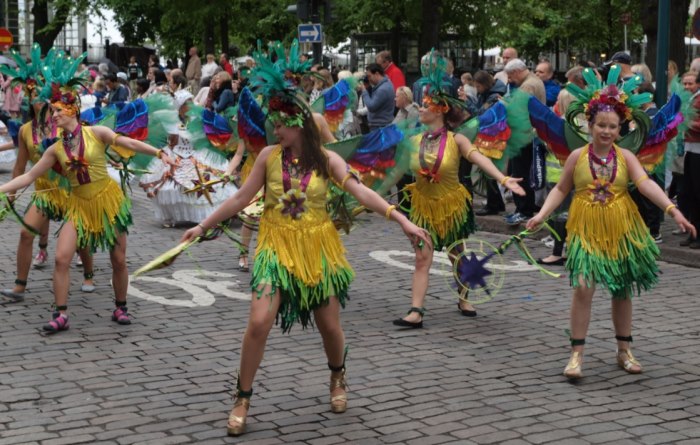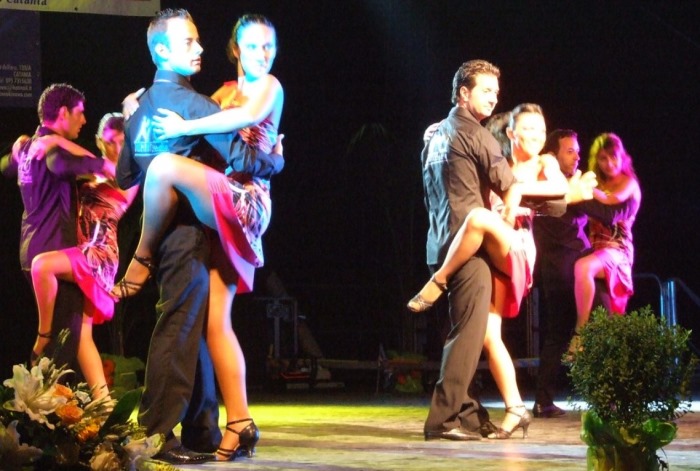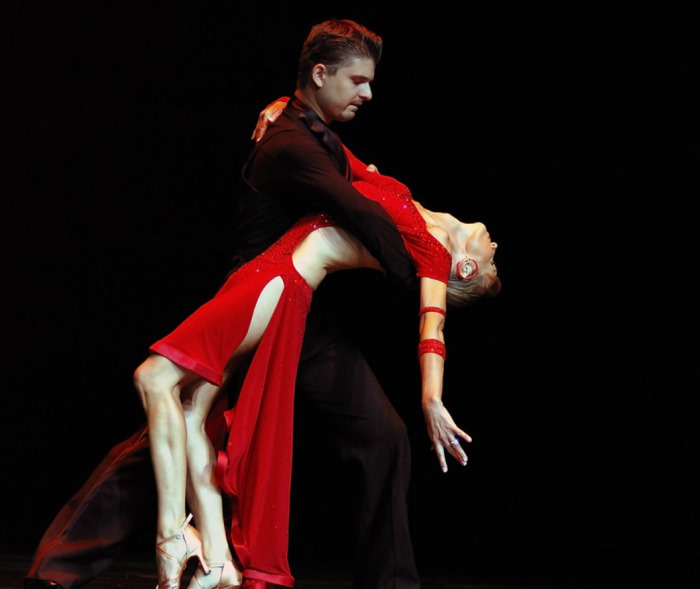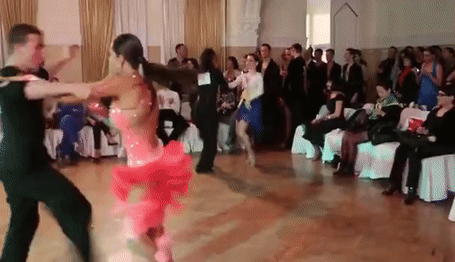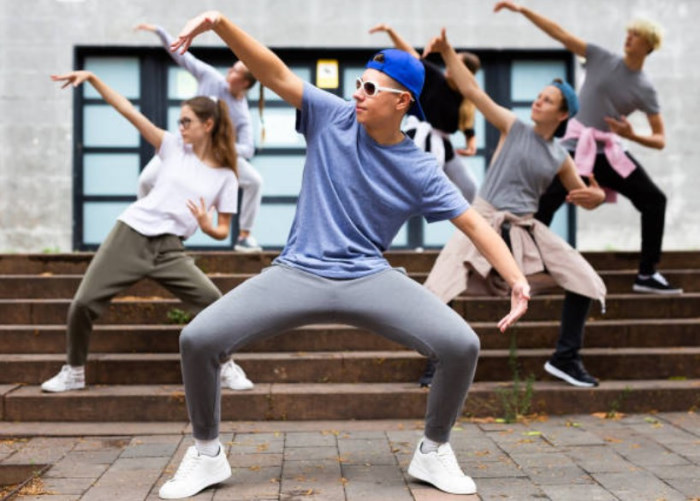Latin dance is so popular that it is taught in many academic institutions besides being a favorite dance genre in worldwide clubs, concerts, and ballrooms.
With a plethora of passionate dance moves and rhythms, it has captivated the heart and souls of numerous aficionados.
There are many types of Latin dance nowadays and some share their roots and dance patterns with one another.
Let’s take a look at the article to discover the origin and characteristics of each Latin dance style and the reasons that make it so appealing to the audience.
Table of Contents
How Many Types Of Latin Dances Are There?
As a myriad of regional elements are added to Latin dance wherever it reaches, there are many different types of Latin dance nowadays.
It is generally divided into two groups: Social Latin American dances and Latin ballroom dances.
With regard to Social Latin dance, it includes Salsa, Bachata, Merengue, Mambo, Kizomba, Zouk, Reggaeton, Argentine tango, Bomba, and Plena. It is typically performed in a group.
Dancers of these styles do not need to acquire finesse to be able to perform Social Latin dances but they have to reveal completely the meaningful stories behind the dance movements and rhythms.
Latin Ballroom Dances are couple dances of a man and a woman such as Samba, Rumba, Cha-cha-cha, Paso Doble, and Jive.
16 Popular Types Of Latin Dance To Differentiate
1. Salsa
Among the most popular Latin dance styles, Salsa dancing has its roots in the Caribbean, Latin, and North America.
It can be seen through Salsa movements and music that the dance is strongly influenced by African dances.
As an Afro-Latin dance style, Salsa is a combination of Mambo, Guaguanco, Cuban Son, Danzon, and other traditional Afro-Cuban dances and is considered more captivating and passionate than Cuba Son.
Salsa is performed in pairs and the couples can exchange their partners to create improvisational elements in the performance.
It features a 4-beat combination of two quick steps and a slow step with a tap or pause. Numerous Salsa festivals and competitions are held around the globe annually.
2. Merengue
Merengue dance comes from the Dominican Republic where it officially became the national dance and musical style in the 1930s.
Compared to other types of Latin dance, it is among the easiest to learn. Thus, it’s suggested as an ideal choice for those longing for an easy start in Latin dancing.
Merengue is an 8-beat dance. Dancing partners hold each other’s hands at chest level while the leader holds the followers’ waist with his right hand.
This pose enables dancers to easily switch to an open position or perform circle movements without letting go of the other’s hand.
When dancing, the hips of the pair move in the same direction. They move in slow semi-circles following the music beats.
3. Bachata
Bachata was first introduced in the Dominican Republic in the late 1950s.
The dance was initially performed in bars or street corners in impoverished regions. Thus, the then-nation dictator Rafael Trujillo deemed Bachata as a low-class dance.
However, after his assassination in the early 1960s, this dance genre became a hit and quickly spread across the country.
The basic Bachata movement includes 3 steps and a tap on the fourth beat. Its turns are easier and slower than those of Salsa.
The music was originally slow yet as time passed by, it adopted faster music like hip hop which resulted in a variety of new dance positions.
See more: List of10 Famous bachata dancers
4. Rumba
Rumba dance originates from the Cuban son. It is widely considered the most sensuous dance of all types of Latin dance.
As an Afro-Cuban social dance, Rumba is involved in lots of hip movements and footwork and centers around the emotional connection between dancing partners.
It was originally performed with quick steps.
However, the ballroom Rumba dancing that represents a fusion of Spanish and African dance styles features slow rhythms, a romantic sense, and a focus on hip movements.
In Latin dancesport competitions, ballroom Rumba dance comprises three styles namely the international style, the Bolero, and the American Rumba.
5. Samba
As an important part of Rio’s Carnival Celebration, Samba is known to be among the most popular Latin dances in the world. Brazil is home to this Latin dance type.
It became popular in the U.S. and Western Europe in the early 1940s. Some of the Samba dance styles are forms of partnered Latin dance while others are solo dances.
Although the ballroom Samba has many variants, it still maintains some of the Brazilian Samba characteristics. The dance is characterized by rocking body movements, rapid rhythmic steps, and lively African beats.
6. Cha-Cha-Cha
Cha Cha Cha dance was born of Cuban roots. What makes it appealing to dancers all over the world is its flamboyant, fun, sensual, and somewhat contagious nature.
It is performed with the music of the same name that was first introduced by Enrique Jorrin a Cuban violinist and composer in the early 1950s.
The basic Cha Cha Cha movement of stepping forward or backward while shifting weight from one foot to the other is followed by a quick set of 3 steps.
Many dancers count these 3 quick steps like Cha Cha Cha as they sound like the shuffling sound of the dancers’ feet. This explains why the dance gets its name.
7. Paso Doble
Paso Doble means 2 steps in Spanish.
As one of the Spanish folk dances used to express several aspects of Spanish life, this genre of Latin dance imitates a ferocious and passionate bullfight that is a Spanish iconic tradition.
One dancer represents the torero while the other represents his cloak. The other dancer can also be another torero, or on very rare occasions represent the provoked bull.
It was in 1920 that the Paso Doble was performed in France for the first time and soon popularized in Parisian elite society in the 1930s.
As a result, many figures and steps of the Paso Doble dance have their French names.
After WW2, the dance was named among the Latin-American programs of sports ballroom dancing.
8. Jive
Jive is an African-American-originated dance with swing music and free, energetic, and fast-paced movements.
This modern standard dance requires excellent partner work in which one is the leader and the other is the follower.
The basic dance moves are backward and forward steps, rock steps, and triple steps.
In addition, Jive dancers showcase a lot of technical skills such as quick spins, sharp changes in direction, and bouncy footwork with lots of kicks and pumps.
In 1968, Modern Jive was recognized as one of 5 Latin dances besides Samba, Cha Cha Cha, Rumba, and Paso Doble, in international dance sports competitions.
9. Mambo
Mambo is a Latin American dance of Cuban origin. The dance became popular across Latin America in the 1940s when the music of the same name was on the rise.
Despite sharing much in common with the Cha Cha Cha dance which used to be called syncopated mambo and rumba dance, the Mambo features great freedom, seduction, and temperament.
Mambo dancers are free to express their emotions and feelings in incendiary rhythms with hip-swaying action that makes the Mambo movements more lissom and flexible.
The Mumba basic three-beat steps are not restricted to a couple’s dance but also appear in other types of dancing like aerobics or line dancing performed alone or by groups.
10. Argentine Tango
Argentine Tango is widely known as a sultry couple dance. It comprises various styles that were developed throughout different eras and regions.
The dance originates in poor regions of Buenos Aires where low classes inhabited in the early 1900s.
In the 1910s, Tango made its overseas debut and became popular in many big cities around the world like London, Berlin, Paris, and New York City.
Among the most renowned couple dances at present, it requires intimate interaction and great teamwork between dancers.
A perfect Tango performance relies heavily on highly skilled staccato footsteps, improvised sensual moves, flexed knees, and a strong connection between dancing partners.
11. Bossa Nova
Bossa Nova was developed in Brazil in the late 1950s. The name means “new wave”, “new beat” and “new trend” in Portuguese. It can be performed either solo or in a pair.
Although the music is very popular, Bossa Nova is not widely taught in dance academic institutions.
Thus, when the dancers hear the music, they feel confused with choosing the appropriate dance styles and sometimes use the dance patterns of Samba, Merengue, and Rumba instead.
Bossa Nova dance movements vary according to choreography and music preferences.
One of the basic movements is a sequence of a step forward, a tap, a step backward, and a step together for the first 4 beats and performed with the opposite foot for the next four beats.
Side steps and hip sways are two common dance patterns that can be found in the Bossa Nova.
12. Kizomba

Kizomba dance received many credits following the increasing popularity of Kizomba music in Angola in the 1990s.
Some believe that this genre of Latin dance is an evolution of Angolan traditional dance Semba which has been widely danced in Angola since the 1950s.
When the Samba dancers started to dance Semba to the beat of the Kizomba music, a new dance type was formed.
In other words, the basic Kizomba dance was the Semba dance in a slow tempo of Kizomba music.
As a coupled dance, it requires the perfect synchronization of the pair with the music via smooth body movement, elegant footwork, and appropriate facial expression.
The male dancer called Banga often takes the role of the leader and the female dancer called Ginga is the follower.
13. Zouk
Zouk is a versatile and energetic social dance that is suitable for all ages. It can be danced to various types of music and emotions.
The dance finds its roots in Brazilian Samba and Lamba dance. It means a party or festival in Antillean French Creole.
Being a 3-beat dance, Zouk is characterized by beautiful wave-like movement, circular rotations, body deflection, and head turns.
Zouk hip grinds is a reminiscence of the Lambada while its body roll movement is like the Samba.
Zouk adopts both open and closed embraces.
Unlike the open embrace hold that features a gap between the bodies of the dancers, the close embrace allows for the partners’ body touch, suitable for close partners.
14. Reggaeton
The birth of Reggaeton dance is deeply associated with the creation of Reggaeton music. It is a music genre of Panama origin in the 1970s and spread to Puerto Rico in the 1990s.
Reggaeton music is influenced by Electronica and Hip Hop beats, Jamaican and Latin American styles, and sometimes inclusive of rapping in English and Spanish.
However, it has its exclusive rhythms which are called dembow.
Reggaeton is a passionate and sexy yet easy-to-learn dance, hence, it has become a very popular dance in discos and clubs around the globe.
One of the classic dance moves is an explicit sexual overtone called Perreo.
If you are a fan of Dirty Dancing such as grinding dance…, the dancing style in that movie is similar to Reggaeton but doesn’t show as much Caribbean influence as Reggaeton.
15. Bomba
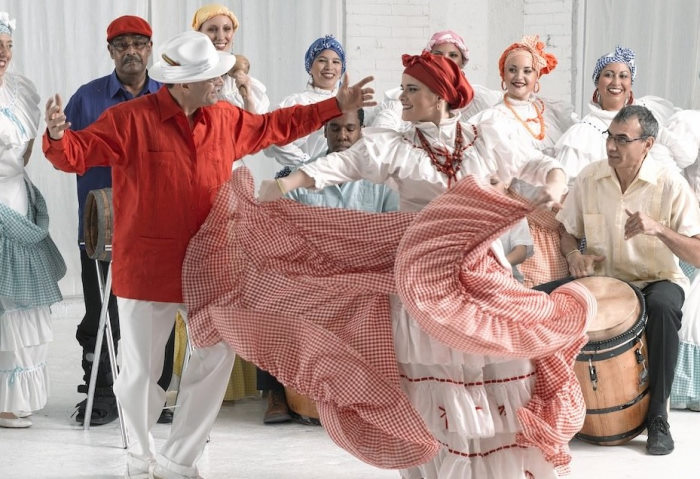
Bomba dance was brought to Puerto Rico in the Spanish colonial period by enslaved Africans. Thus, it is undoubted that the dance is deeply influenced by African and Spanish cultures.
At that time, Bomba music was a spiritual and political method for the slaves to express their frustration and anger, which provoked rebellions and uprisings.
Bomba can be danced to either a yubá which is a spiritual and somber music style. It can also be danced to an upbeat holandé with great enthusiasm.
The dance derives its name from bomba barrels or drums on which its base rhythm is performed.
A distinctive characteristic of Bomba is that the dancers lead the musicians and not vice versa.
As a solo Latin dance style, Bomba features instantaneous creativity and lively improvisation.
16. Plena
Plena is a Puerto Rico dance with African-American roots, developing from bomba music in the early 20th century.
The dance demonstrated the struggle of people from lower classes and expressed their opinions or satirical commentaries on political and social events.
As a result, it is described as the newspaper of the people by Tito Matos.
Compared to the sixteen basic rhythms of Bomba, Plena has only one. Like Bomba, Plena features quick steps and offers solo performances.
Some musical instruments used in Plena are guitar, cuarto, panderetas, guiro, bongos, maracas and congos.
Final Words
Here are some different types of Latin dance you might need to know. Each type is deeply embedded within the identity, culture, and history of one or more regions.
When you learn Latin dance, it is not just the dance but the stories behind them that are subtly expressed through musical rhythms, lyrics of the song, and dance moves.
Find your most suitable Latin dance style and be ready to feel the beats and rhythms that once shaped the whole land and era.
